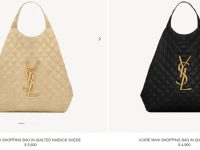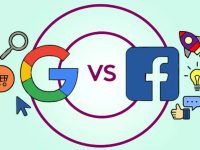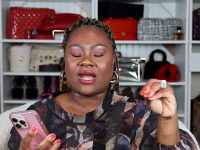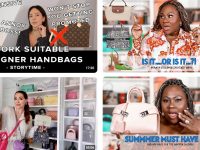How to Promote and Sell Designer-Inspired Products on Facebook: A Systematic Guide
Today, many sellers worldwide promote designer-inspired products through their own e-commerce websites, often using Facebook or Google ads. Overall, Facebook is preferred over Google because Facebook ad accounts are easier to obtain, and the advertising costs are generally lower, making it simpler to get started.
Many of my clients use Facebook to promote the replica-inspired e-commerce websites I have built for them. They typically use Facebook’s advertising system to create ads for their websites, pushing these sites to their target audiences for maximum exposure, as shown below.

Or like this,

Following my guidance, many customers have achieved excellent results, with top sellers moving over 1000 pairs of shoes or more than 500 bags daily.

Today, I will systematically explain the promotion process of designer-inspired products on the Facebook advertising platform.
Facebook Advertising Accounts
Facebook advertising accounts are usually linked to personal accounts. There are many types of accounts: those with over 100 friends, those with fewer than 100 friends, billing accounts, secondary limit removal accounts, tertiary limit removal accounts, special page accounts, and so on. These accounts are typically collected from specialized “phishing systems,” such as the following:

(Insert login examples here)

These are mostly old accounts with high trust scores and stability. Their purchase cost is quite low—sometimes less than one US dollar—supplied by specialized account providers.
There is also a mid-level account type called a Business Manager (BM) account. This type has better weight and ad stability than personal accounts but comes with a higher cost.
The highest weight and most stable accounts are company accounts. However, since these are designer-inspired product ads, most agencies will not open such accounts for you. Even if they do, the cost-effectiveness is low, so company accounts are generally not recommended.
Ads Creation Environment
Many ads must be created across multiple advertising accounts before being published. For top sellers, managing hundreds of ad accounts daily is common. The main challenge is how to isolate the environment for so many accounts. Here, “environment” refers to IP address, browser fingerprint information (browser type, version, etc.), operating system, user agent information, and more.
Environmental isolation and differentiation are essential; otherwise, once your ad accounts are logged in from the same environment, Facebook will link them and ban all accounts immediately. Using a large number of accounts under one environment is highly suspicious.
Our solution is to simulate a multi-IP and multi-browser environment. This means using residential IP proxy pools, such as Luminati, Oxylabs, and others.

Additionally, we use anti-detection browsers for multi-account management, such as AdsPower, which offers powerful fingerprint simulation capabilities.
Environmental isolation is the first critical step in advertising designer-inspired e-commerce websites.
Ads Billing and Recharge
Facebook ad payments usually use virtual cards or CVV cards, both of which I have experience with. However, I rarely use CVV cards anymore because they are unstable. When your ad performance improves and budgets increase, accounts paid with CVV cards often get deactivated due to payment issues, negatively impacting your campaigns and causing losses.
Virtual cards are much more stable and do not have these problems. DIVVY is one reliable virtual card provider.

The stability of ad accounts is closely related to the BIN of the virtual card. Poor BINs can easily cause ads to be stopped. Identifying good and bad BINs requires personal experience and practice with ads.
Ads Review and Optimization
If you directly create an ad for a designer-inspired product, Facebook will reject it, and your account may be deactivated immediately. To run these ads successfully on Facebook, cloaking technology is necessary. For more details on cloaking technology, please refer to this article: The Application of Cloaking Technology in the Designer-Inspired E-commerce Industry.
Choosing a reliable cloaking service provider is crucial. For example, Kowboykit claims to be one of the most powerful cloaking tools, though it is relatively expensive.
Regarding ad optimization, this depends on individual skill and experience. I usually optimize ad creatives, audience targeting, and landing pages. I also use tools like ADSPY and Facebook’s official audience insights for better targeting.
Further Optimization
The above are basic skills. More importantly, optimization involves detailed work on landing pages, product selection, ad layout, posting time, and copywriting. These require time and experience to master.

An excellent advertising expert gains these skills only through repeated practice and multiple campaigns.





